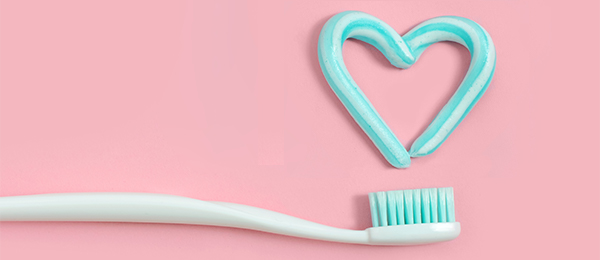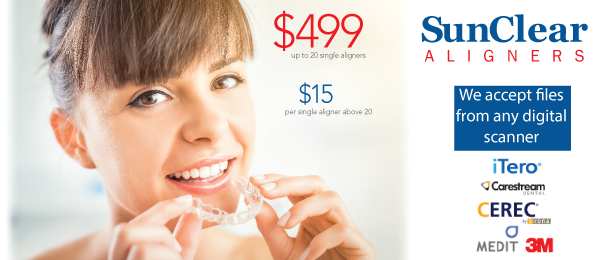Editor’s note: As health care professionals, we are charged with providing the best outcomes at the lowest levels of patient risk. The 4 articles in this issue address potential challenges coincident with orthodontic treatment. Challenge 1: caries and white-spot lesions. The first article found that integrating real-time monitoring of brushing with a computer application use can significantly improve oral hygiene. The second article looks at decreasing caries risk by routinely using higher-level fluoride dentifrices or mouthrinses. Challenge 2: patient motivation. The third article assesses the benefits of orthodontic treatment from the perspective of adolescent patients, findings that the clinician can use in building motivation before and during treatment. Challenge 3: periapical pathology. The final article documents an association between adequate endodontic treatment and fewer periapical sequelae after orthodontic treatment. Although related specifically to orthodontics, the information is applicable to all areas of clinical dentistry.
Assessing the plaque removal efficacy of an interactive powered toothbrush
In a randomized controlled study, researchers compared the plaque removal efficacy of an interactive powered toothbrush with that of a manual toothbrush in adolescents undergoing orthodontic treatment. This study was published in the April issue of American Journal of Orthodontics & Dentofacial Orthopedics.
This study was conducted from September through November 2015 in the Department of Orthodontics and Dentofacial Orthopedics, University Medical Center of the Johannes Gutenberg University, Mainz, Germany. Researchers randomly assigned 60 adolescents aged 13 to 17 years with fixed appliances to 2 test groups.
Eligibility criteria were 16 or more natural teeth (excluding third molars) with facial and lingual scorable surfaces; at least 1, but not more than 6, focus care areas; a mean whole-mouth screening Turesky Modified Quigley-Hein Plaque Index (TMQHPI) score of 1.75 or higher; familiarity with smartphone use; no severe or untreated caries, severe gingivitis, or active or advanced periodontitis requiring treatment; no smoking or any other type of tobacco use; no use of antibiotics or chlorhexidine mouthrinse within the 2 weeks before screening; and no dental prophylaxis in the 4-week period before screening. In addition, all participants routinely used manual toothbrushes.
One experienced examiner administered the TMQHPI at screening and baseline, as well as at the 2- and 6-week efficacy assessments. Scorable teeth were graded on buccal and lingual surfaces using a 5-point scale (0 = no plaque, 5 = plaque covering two-thirds or more of the side of the tooth crown). In addition, the examiner used a modified Quigley-Hein Index (MQH) to assess plaque on vestibular surfaces on which orthodontic appliances were present.
The examiner identified areas in the dentition exhibiting considerable plaque and recorded these as “focus care areas.” Participants were instructed to spend extra time brushing these areas. Both at initial screening and at the end of the study, the maxillary right and left posterior buccal segments and the mandibular anterior labial surfaces had the greatest level of plaque accumulation.
Participants in the powered toothbrush group used an Oral-B Professional Care 6000 rechargeable powered toothbrush with Oral-B Precision Clean brush head (Procter & Gamble), a charger, and a smartphone (Samsung Galaxy S3, Samsung Electronics). The interactive toothbrush provided daily reminders, emphasized focus care areas, and provided real-time feedback on brushing, as well as motivational information. Those in the manual toothbrush group used a soft toothbrush (Oral-B Indicator 35). Patients in both groups were instructed to brush their teeth twice daily with a 1,450–parts per million sodium fluoride toothpaste (Blend-a-Med Classic, Procter & Gamble).
A secondary outcome pertained to motivational aspects of brushing with the interactive powered toothbrush. At screening and the end of the 6-week study, the researchers asked participants about their inclination to brush 2 times per day and at least 2 minutes per session. Scores ranged from 1 through 5, with 1 indicating the highest motivation.
At weeks 2 and 6, participants in the powered toothbrush group experienced a significantly greater reduction in plaque than those in the manual toothbrush group (P < .001). However, both groups experienced significant reductions in whole-mouth TMQHPI-MQH scores at weeks 2 and 6 compared with baseline scores (P < .001).
Similarly, at weeks 2 and 6, adolescents in the powered toothbrush group experienced significantly greater removal of plaque at focus care areas compared with those in the manual toothbrush group (P < .001). Again, both groups experienced significant reductions in mean plaque scores for focus care areas at weeks 2 and 6 compared with baseline scores (P < .001).
Researchers observed a statistically significant (P < .005) increase in motivation to brush twice daily among participants in the powered toothbrush group. They also observed a statistically significant (P < .005) increase from baseline through 6 weeks in participants’ motivation to brush for at least 2 minutes. Moreover, 93% of those in the powered toothbrush group agreed with the statement, “With the app, I can do more for my oral care.”
Based on the study findings, the authors concluded that adolescents’ use of wireless mobile technology can be harnessed to improve toothbrushing efficacy and motivation. They noted previous reports of increasing integration of digital technologies into personalize health care, as well as the use of mobile phone applications, especially in adolescents.
This study was supported by Procter & Gamble.
Read the original article here or contact the ADA Library & Archives for assistance.

Impact of various fluoride regimens on caries risk during orthodontic treatment
To assess the impact of various fluoride regimens on caries risk and caries risk factors during orthodontic treatment, researchers conducted a 3-arm, parallel group, randomized controlled trial. The study was published in the February issue of European Journal of Orthodontics.
The study sample comprised patients with a mean age of 15.4 years who were referred to the Specialist Clinic of Orthodontics, Mölndal Hospital, Mölndal, Sweden. Inclusion criteria were age 12 through 20 years and orthodontic treatment with fixed appliances. Exclusion criteria were treatment in only 1 jaw, treatment of less than 1 year, and treatment with a removable appliance or a lingual fixed appliance.
The researchers randomly assigned 270 patients to 1 of 3 treatment arms: group 1, 1,450 ppm fluoride toothpaste (control); group 2, 1,450 ppm fluoride toothpaste plus 0.2% sodium fluoride mouthrinse; and group 3, 5,000 ppm fluoride toothpaste.
All participants received oral and written instructions regarding the proper use of fluoride-containing products. They were instructed to apply about 1 gram of toothpaste on a toothbrush and brush after breakfast and before bedtime. Participants in group 2 were instructed to rinse for 2 minutes with 10 milliliters of mouthrinse within an hour of brushing.
The primary outcome variables were caries risk and numbers of cariogenic bacteria. Secondary outcome variables were general health status, plaque levels, intake frequency of sugar-containing foods and drinks, and number of decayed and filled teeth (DFT).
Before orthodontic treatment and 1 year after the start of treatment, researchers collected or determined plaque status, numbers of mutans streptococci and lactobacilli per milliliter of saliva, general diseases (such as asthma), intake of sugar-containing foods and beverages, fluoride use, oral hygiene habits, and dental caries status (DFT). Four bitewing radiographs were obtained in each patient. The investigators transferred the data for these variables to a Cariogram and calculated each participant’s caries risk (that is, the “chance of avoiding new cavities”).
At baseline, the researchers observed no statistically significant difference in caries risk among the 3 groups. After 1 year of orthodontic treatment, participants in group 1 experienced a statistically significant increase in caries risk (P < .001). In addition, the study findings showed a statistically significant difference in caries risk among the 3 groups after 1 year of treatment (P < .05), with groups 2 and 3 experiencing no significant change in risk.
Group 2 bested group 3. The authors surmised that this may have been due to not rinsing with water after using the mouthrinse, as well as potentially better access to fluoride in a mouthrinse compared with more varied brushing techniques.
Participants in all 3 groups experienced a statistically significant increase in the number of mutans streptococci and lactobacilli after 1 year of orthodontic treatment. The researchers did not observe any significant difference in cariogenic bacterial levels among the 3 groups. They postulated that the impact of fluoride on cariogenic bacteria physiology and metabolism may be of greater importance than the relative number of cariogenic bacteria.
To reduce caries risk during orthodontic treatment, the researchers recommend regular use of high-concentration fluoride toothpaste (5,000 ppm) or mouthrinse (0.2% sodium fluoride) in combination with 1,450 ppm fluoride toothpaste.
Read the original article here or contact the ADA Library & Archives for assistance.

Adolescent patients’ perceptions of orthodontic treatment outcomes
Few qualitative studies have been published regarding orthodontic treatment outcomes from patients’ perspectives. In this study, published in the June issue of European Journal of Orthodontics, researchers interviewed adolescent patients with the aim of identifying perceived outcomes of treatment.
The study comprised 20 patients (8 boys, 12 girls) ranging in age from 13 through 18 years who recently had completed fixed appliance treatment at the Eastman Dental Hospital in London, United Kingdom. Different clinicians in the orthodontic department treated the patients, providing a varied orthodontic experience within the sample.
During recruitment, the researchers used purposive sampling to obtain a sample that was representative of a typical cohort of patients treated in the department. Doing so ensured that a broad spectrum of ideas were explored, as well as enhanced the generalizability of the findings as much as possible within the constraints of qualitative research.
This research was a 2-part qualitative study. Part 1 assessed adolescent patients’ perceptions of treatment outcomes, and part 2 evaluated their parents’ perceptions (published as a companion article in the same issue of the journal). The interviews consisted of semistructured one-on-one interviews conducted by 2 researchers who were trained in in-depth interviewing techniques and qualitative analysis. The interviews were digitally recorded and transcribed verbatim.
Three main themes emerged from the interviews regarding patients’ perceptions of treatment outcomes: health-related behavioral change, dental health, and psychosocial influences.
Within health-related behavioral change, the subthemes of oral hygiene awareness and dietary changes emerged. Most participants reported having an improved awareness of the importance of oral hygiene. For instance, 1 patient stated, “I’m more aware of cleaning and the hygiene of teeth now that I’ve been through treatment. Because my teeth are … straight[er], I feel I need to take care of them.”
Some patients also discussed the need to improve their diets and consume less sugar. These statements usually were related to the education and regular reinforcement they received during orthodontic treatment, but some patients also feared compromising the treatment benefits. One participant remarked, “The treatment definitely made me more aware of what I’m eating … stuff that’s too sugary or [contains] too much citrus is not good for me. Now that my teeth are in a good position, I don’t want to do anything to spoil the result.”
The dental health theme encompassed several subthemes: improved esthetics, functional changes, food trapping, plaque retention, avoidance of future complex treatment, and avoidance of future dental health problems. Several participants noted a reduction in food trapping after orthodontic treatment. As 1 patient remarked, “Food doesn’t get stuck in between my teeth anymore, because they’re all straight and close together. Before I used to get food stuck everywhere.”
The third theme, psychosocial influences, also encompassed several subthemes: self-image and perceptions of self, self-esteem and confidence, social norms and acceptance, social interactions, and alleviation of dental anxiety. For example, when talking about the effects of pretreatment malocclusion, several adolescents noted feelings of self-consciousness and insecurity. When asked about treatment outcomes, they expressed strong feelings about improvements in self-confidence. One patient commented, “The best thing [about treatment] is more confidence. I don’t have to be ashamed of my teeth. It makes me feel better about myself.”
The authors noted that these interviews with adolescent patients provided valuable qualitative data regarding the benefits of orthodontic treatment. These findings are especially important in managing patients’ expectations during the informed consent stage, the authors suggested. In addition, most of the patients noted positive changes in health-related behavior, providing further support for short-term and potentially long-term oral health benefits of orthodontic treatment.
Read the original article here or contact the ADA Library & Archives for assistance.

Periapical status of endodontically treated teeth before and after orthodontic treatment
Orthodontic movement of endodontically treated teeth has become common among older patients. The objective of this retrospective study was to evaluate the periapical status and integrity of endodontically treated teeth before and after orthodontic treatment. This study was published in the June issue of European Journal of Orthodontics.
The study comprised 128 endodontically treated teeth in 72 patients (23 men, 49 women) who had undergone fixed appliance orthodontic treatment. Participants’ mean (standard deviation) age at the start of orthodontic treatment was 23.4 (6.9) years, and their mean (standard deviation) age at the end of treatment was 25.2 (7.1) years. All patients had at least 1 periapical lesion, and all teeth with apical periodontitis were asymptomatic and functional.
Exclusion criteria were the absence of endodontically treated teeth, poor radiographic image quality at the site of the endodontically treated teeth, presence of teeth that were endodontically re-treated during orthodontic treatment, and uncompleted orthodontic treatment.
Panoramic radiographs obtained before and after orthodontic treatment were available for all study participants. One experienced endodontist conducted the radiographic evaluations of the endodontically treated teeth with an interval of at least 1 month between review of the preorthodontic and postorthodontic treatment images.
The researchers assessed and categorized the quality of endodontic treatment as “adequate,” “unsure,” or “inadequate.” Specific endodontic variables evaluated were fill length (relative to radiographic apex), density, and homogeneity, as well as the adequacy of the coronal seal.
The investigators used the probability index (PRI) to assess periapical bone destruction (categorized as “almost definitely not present,” “unsure,” or “almost definitely present”). They used the periapical index (PAI) to assess periapical status (healthy = PAI 1 and 2; diseased = PAI 3, 4, and 5).
According to the PRI, periapical bone destruction was significantly higher after orthodontic treatment. The study findings showed that this change was a function of the preorthodontic quality of endodontic treatment. The following factors were statistically significant for both the PRI and PAI: root canal fill length (relative to radiographic apex), filling material density, and homogeneity of the filling.
While stating that the preorthodontic quality of endodontic treatment was related to periapical changes after orthodontic tooth movement, the authors concluded that further research is needed to verify an orthodontic treatment protocol for endodontically treated teeth.
Read the original article here or contact the ADA Library & Archives for assistance.
The SunClear advantage
More and more patients are asking for aligners but, due to costly aligner lab fees, many are forced to decline treatment or go online (for do-it-yourself aligners). Thanks to the SunClear 3D aligner design software and manufacturing solution, digital orthodontics has now become more affordable. SunClear aligners are the clear alternative to expensive and overpriced aligner systems.
• Save up to 50% on aligner lab fees.
• High-quality aligners design ready for approval ready in a matter of days after the impression has been received by the lab.
AAO Winter conference set for Feb. 7-9 in Austin, Texas
 The 2020 American Association of Orthodontists Winter Conference will offer an in-depth examination of the challenges of treating patients with open bites. All dental professionals are welcome to attend the meeting, February 7 – 9 at the J.W. Marriott Austin in Austin, Texas. Expert speakers will address anterior open bite in the mixed dentition, adolescence, and adulthood. Topics will include functional and fixed appliances, myofunctional therapy, aligners, temporary anchorage devices, and surgery. Related topics like vertical growth in children and sleep apnea will be reviewed. Presentations will also examine the progression, impact, and treatment of condylar changes as well as the evidence on long-term stability. Registration will open August 5.
The 2020 American Association of Orthodontists Winter Conference will offer an in-depth examination of the challenges of treating patients with open bites. All dental professionals are welcome to attend the meeting, February 7 – 9 at the J.W. Marriott Austin in Austin, Texas. Expert speakers will address anterior open bite in the mixed dentition, adolescence, and adulthood. Topics will include functional and fixed appliances, myofunctional therapy, aligners, temporary anchorage devices, and surgery. Related topics like vertical growth in children and sleep apnea will be reviewed. Presentations will also examine the progression, impact, and treatment of condylar changes as well as the evidence on long-term stability. Registration will open August 5.
ADA CE Online courses
 Need CE? ADA CE Online has hundreds of hours of CE that you can earn from the comfort of your own home. Too many to choose from? Take them all! Get unlimited access to the entire ADA CE online library, including JADA, for one year from purchase. Access anywhere, anytime. With new courses being added every month, you’ll never run out of education opportunities. Group subscriptions are also available, check it out now!
Need CE? ADA CE Online has hundreds of hours of CE that you can earn from the comfort of your own home. Too many to choose from? Take them all! Get unlimited access to the entire ADA CE online library, including JADA, for one year from purchase. Access anywhere, anytime. With new courses being added every month, you’ll never run out of education opportunities. Group subscriptions are also available, check it out now!
![Dr. Graber Preferred Photo[2]](https://pages.ada.org/hs-fs/hubfs/Dr.%20Graber%20Preferred%20Photo%5B2%5D.jpg?width=140&name=Dr.%20Graber%20Preferred%20Photo%5B2%5D.jpg)
The consulting editor for JADA+ Specialty Scan — Orthodontics is Lee W. Graber, DDS, MS, MS, PhD; Diplomate, American Board of Orthodontics. |
|




